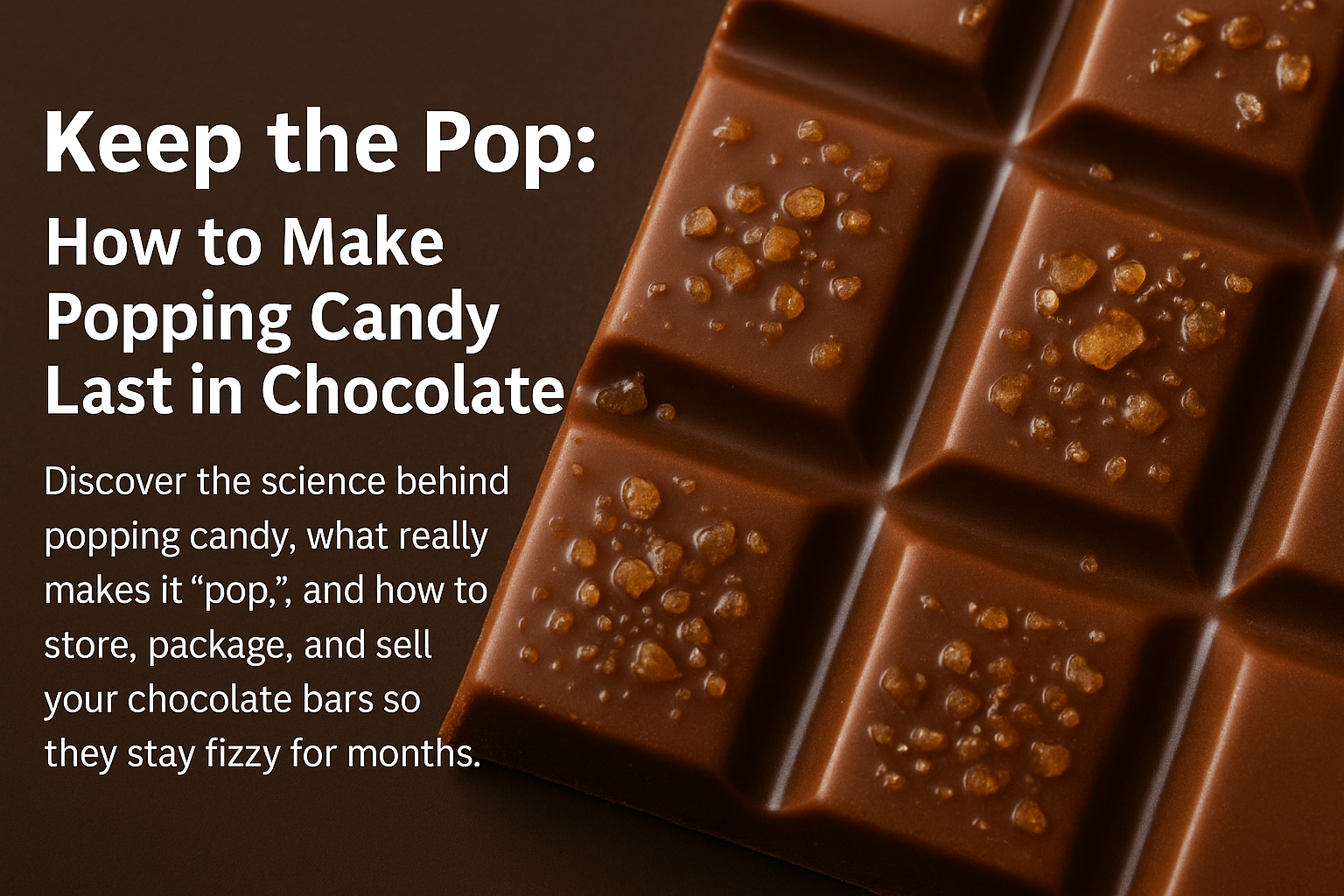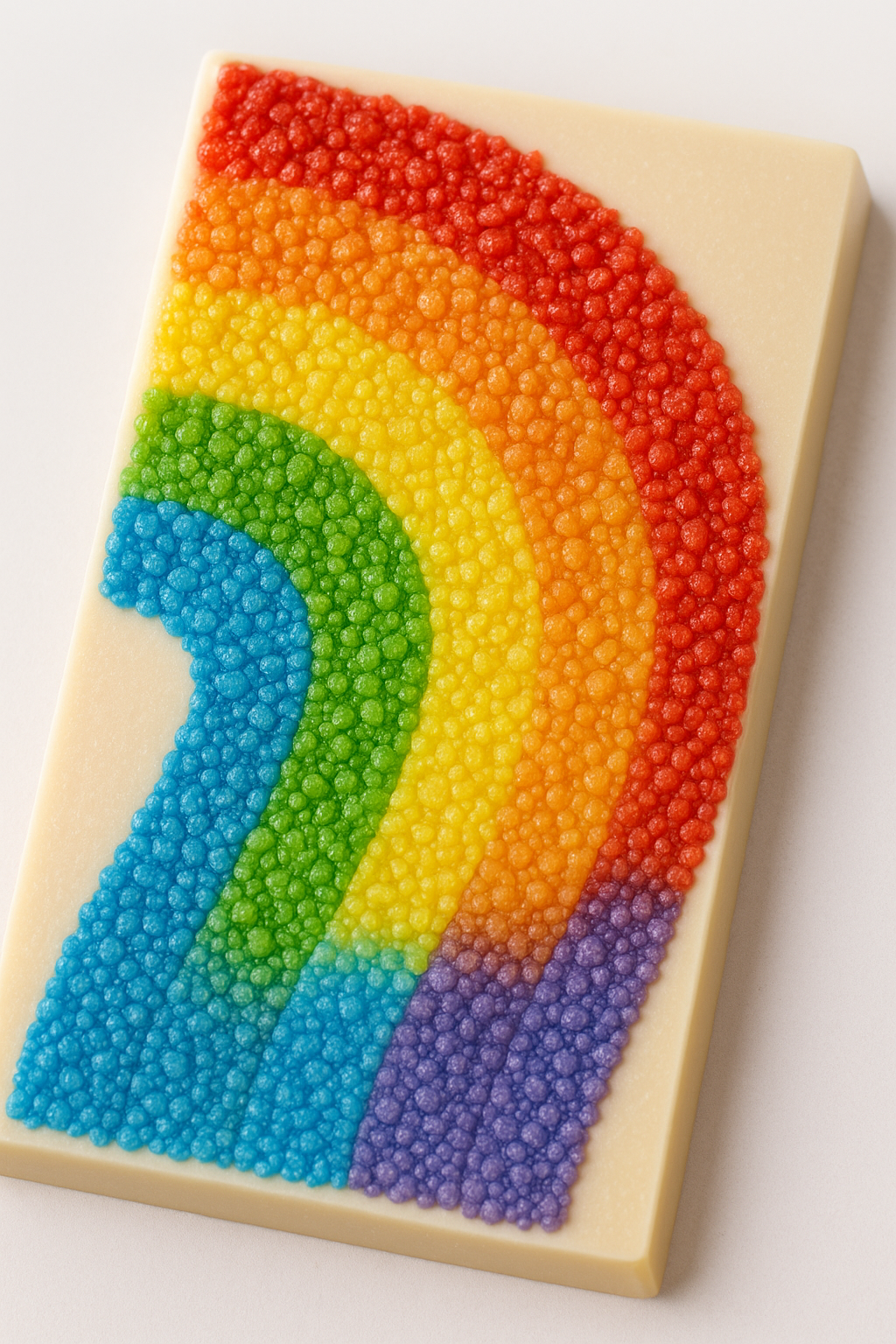Popping candy in chocolate bars is one of those little joys that makes people stop, smile, and say,
“Wow!” but as any chocolatier or product developer knows, the magic only works if the pop is still there when the customer takes a bite.
As an award-winning chocolatier, international consultant, and food judge, I’ve worked with popping candy in product launches and hands-on training for chefs and students. Here’s the science-based answer I share whenever someone asks:
“How long does popping candy actually stay ‘poppy’ once it’s mixed into chocolate?”
The Science Behind the Crackle
Popping candy is made by exposing molten sugar syrup to pressurised carbon dioxide (400–600 psi). As the sugar cools and hardens, it traps thousands of tiny bubbles.
When you eat it, saliva dissolves the sugar matrix and releases the gas producing that signature snap, crackle, and pop.
Moisture is the Main Enemy
The pop only works if the CO₂ stays trapped until eating moisture dissolves the sugar prematurely and lets the bubbles escape.
That’s why humidity control is crucial in chocolate production, even a slightly damp environment can kill the effect before the chocolate ever reaches the customer.
Chocolate Gives You an Advantage
Tempered chocolate has a very low moisture content (≤0.5%), which helps protect the candy. If your popping candy is completely dry when it’s mixed in and your packaging prevents moisture ingress you can expect months of shelf life with minimal loss of effect.
Shelf Life Expectations
Coated popping candy, foil wrap, cool/dry storage = 3–6 months
Uncoated candy, basic packaging = 4–8 weeks
In ganache or caramels = Hours to days
Pro tip: Lipid-coated popping candy, like the ones produced by suppliers such as Bling Ingredients, is specifically engineered for chocolate applications and is far more stable than uncoated candy
I use Bling ingredients fo all my workshops they have some very cool flavours.
Risk Factors to Watch
Humidity or poor sealing Moisture ingress leads to premature popping.
Warm storage Heat speeds up moisture migration.
Uncoated candy More vulnerable to fat migration or condensation.
High water activity inclusions Ganache, fondant, caramel, or fruit purées will immediately flatten the pop.
Best Practice Checklist: Maximising the Pop
Choose lipid-coated popping candy for chocolate applications.
Store inclusions in airtight containers with a desiccant until ready to use.
Mix and mould quickly to minimise air exposure.
Package in moisture-barrier film (foil or metallised OPP).
Add a food-safe desiccant for humid climates or long shelf life.
Control your cooling tunnel environment to avoid condensation on chocolate.
Why This Matters
As chocolatiers, we’re not just selling bars we’re selling experiences. If your popping candy loses its fizz before the bar reaches your customer, you’ve lost the magic.
By following these best practices, you can confidently deliver a product that crackles with delight months after production.

